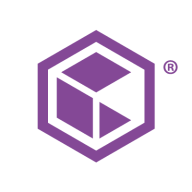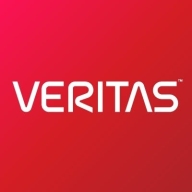

Commvault Cloud and Veritas System Recovery are two competitive solutions in the data management and recovery sector. Commvault Cloud takes the lead in terms of comprehensive features and adaptability, making it an excellent choice for robust data management, while Veritas System Recovery excels with specialized recovery tools, appealing for dedicated backup operations.
Features: Commvault Cloud offers extensive data management capabilities including automated workflows, cloud integration, and a centralized administration console, ideal for diverse data environments. Veritas System Recovery is known for its advanced disaster recovery mechanisms, efficient system restoration capabilities, and ability to handle large data volumes for essential VM and server backups.
Room for Improvement: Commvault Cloud could enhance its user interface for less technical users, reduce complexity for smaller installations, and improve documentation for enterprise features. Veritas System Recovery would benefit from expanding cloud integration options, enhancing user-friendly interfaces, and improving support for complex multi-cloud environments.
Ease of Deployment and Customer Service: Commvault Cloud provides a seamless deployment process with flexible support channels tailored to diverse infrastructure needs, offering a smooth implementation experience. Veritas System Recovery is praised for straightforward deployment but relies heavily on customer-initiated support routes, which can be cumbersome for complex issues.
Pricing and ROI: Commvault Cloud requires a higher initial investment but promises significant ROI over time with its extensive feature set, suitable for businesses needing comprehensive management. Veritas System Recovery offers a more cost-effective setup, making it an attractive choice for those prioritizing affordability and efficient recovery benefits.
| Product | Market Share (%) |
|---|---|
| Commvault Cloud | 13.2% |
| Veritas System Recovery | 0.8% |
| Other | 86.0% |


| Company Size | Count |
|---|---|
| Small Business | 57 |
| Midsize Enterprise | 24 |
| Large Enterprise | 81 |
| Company Size | Count |
|---|---|
| Small Business | 5 |
| Midsize Enterprise | 1 |
| Large Enterprise | 3 |
Commvault Cloud is the ultimate cyber resilience platform built to meet the demands of the hybrid
enterprise. Beyond its core functionality of data backup and recovery across diverse workloads, including applications, databases, virtual machines, and files, Commvault Cloud stands out as a robust defense against ransomware. Going beyond backup, the platform integrates advanced data security features such as encryption, access control, and threat detection, safeguarding against unauthorized access and cyber threats.
With tools for data management, classification, and migration, businesses can optimize storage costs, enhance accessibility, and comply with regulations seamlessly. Boasting cloud integration with major providers like AWS, Azure, and Google Cloud, Commvault Cloud leverages the scalability and flexibility of the cloud for comprehensive data protection and management. The platform's automation capabilities streamline tasks, and its reporting and analytics features provide valuable insights into data usage, potential risks, and optimization strategies. Commvault Cloud is not just a security tool; it is a key component of cyber resilience, enabling organizations to not only protect against cyberattacks but also recover swiftly and minimize the impact of incidents. Elevate your cyber resilience strategy with Commvault Cloud.
Veritas System Recovery 18 delivers superior backup and disaster recovery for servers, desktops, and laptops with a single unified solution that enables businesses to recover from downtime or disasters in minutes. With patented Restore Anyware technology, IT administrators can rapidly restore exactly what they need, when and where they need it - including entire physical and virtual machines to bare metal or dissimilar hardware as well as files, folders, and granular application objects. Unlike other technologies, Veritas System Recovery also provides cross-platform Physical to-Virtual (P2V), Virtual-to-Virtual (V2V), and Virtual to-Physical (V2P) recoveries, making it the perfect complement to physical and virtual environments.
We monitor all Disaster Recovery (DR) Software reviews to prevent fraudulent reviews and keep review quality high. We do not post reviews by company employees or direct competitors. We validate each review for authenticity via cross-reference with LinkedIn, and personal follow-up with the reviewer when necessary.